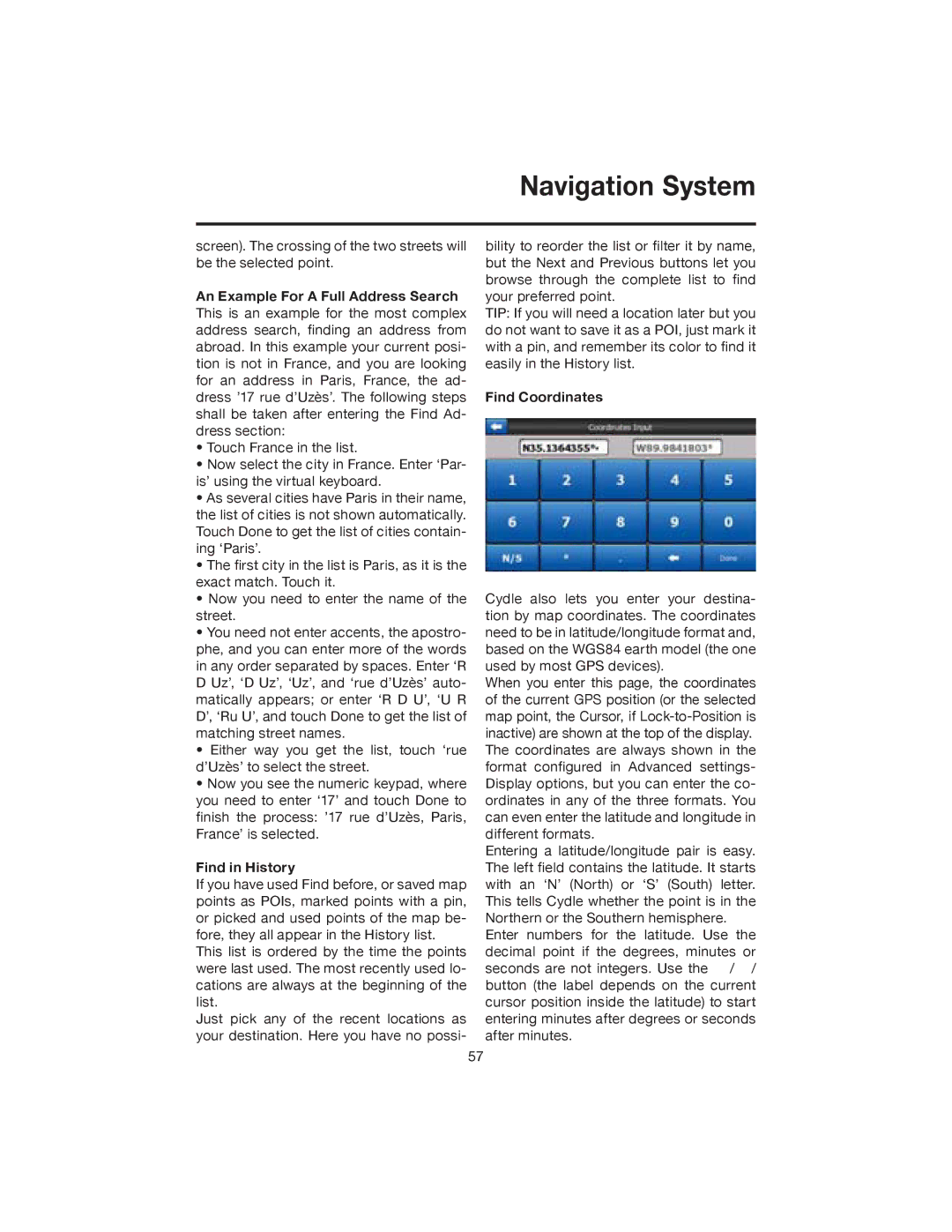
Navigation System
screen). The crossing of the two streets will be the selected point.
An Example For A Full Address Search This is an example for the most complex address search, finding an address from abroad. In this example your current posi- tion is not in France, and you are looking for an address in Paris, France, the ad- dress ’17 rue d’Uzès’. The following steps shall be taken after entering the Find Ad- dress section:
•Touch France in the list.
•Now select the city in France. Enter ‘Par- is’ using the virtual keyboard.
•As several cities have Paris in their name, the list of cities is not shown automatically. Touch Done to get the list of cities contain- ing ‘Paris’.
•The first city in the list is Paris, as it is the exact match. Touch it.
•Now you need to enter the name of the street.
•You need not enter accents, the apostro- phe, and you can enter more of the words in any order separated by spaces. Enter ‘R D Uz’, ‘D Uz’, ‘Uz’, and ‘rue d’Uzès’ auto- matically appears; or enter ‘R D U’, ‘U R D’, ‘Ru U’, and touch Done to get the list of matching street names.
•Either way you get the list, touch ‘rue d’Uzès’ to select the street.
•Now you see the numeric keypad, where you need to enter ‘17’ and touch Done to finish the process: ’17 rue d’Uzès, Paris, France’ is selected.
Find in History
If you have used Find before, or saved map points as POIs, marked points with a pin, or picked and used points of the map be- fore, they all appear in the History list.
This list is ordered by the time the points were last used. The most recently used lo- cations are always at the beginning of the list.
Just pick any of the recent locations as your destination. Here you have no possi-
bility to reorder the list or filter it by name, but the Next and Previous buttons let you browse through the complete list to find your preferred point.
TIP: If you will need a location later but you do not want to save it as a POI, just mark it with a pin, and remember its color to find it easily in the History list.
Find Coordinates
Cydle also lets you enter your destina- tion by map coordinates. The coordinates need to be in latitude/longitude format and, based on the WGS84 earth model (the one used by most GPS devices).
When you enter this page, the coordinates of the current GPS position (or the selected map point, the Cursor, if
Entering a latitude/longitude pair is easy. The left field contains the latitude. It starts with an ‘N’ (North) or ‘S’ (South) letter. This tells Cydle whether the point is in the Northern or the Southern hemisphere.
Enter numbers for the latitude. Use the decimal point if the degrees, minutes or seconds are not integers. Use the / / button (the label depends on the current cursor position inside the latitude) to start entering minutes after degrees or seconds after minutes.
57
